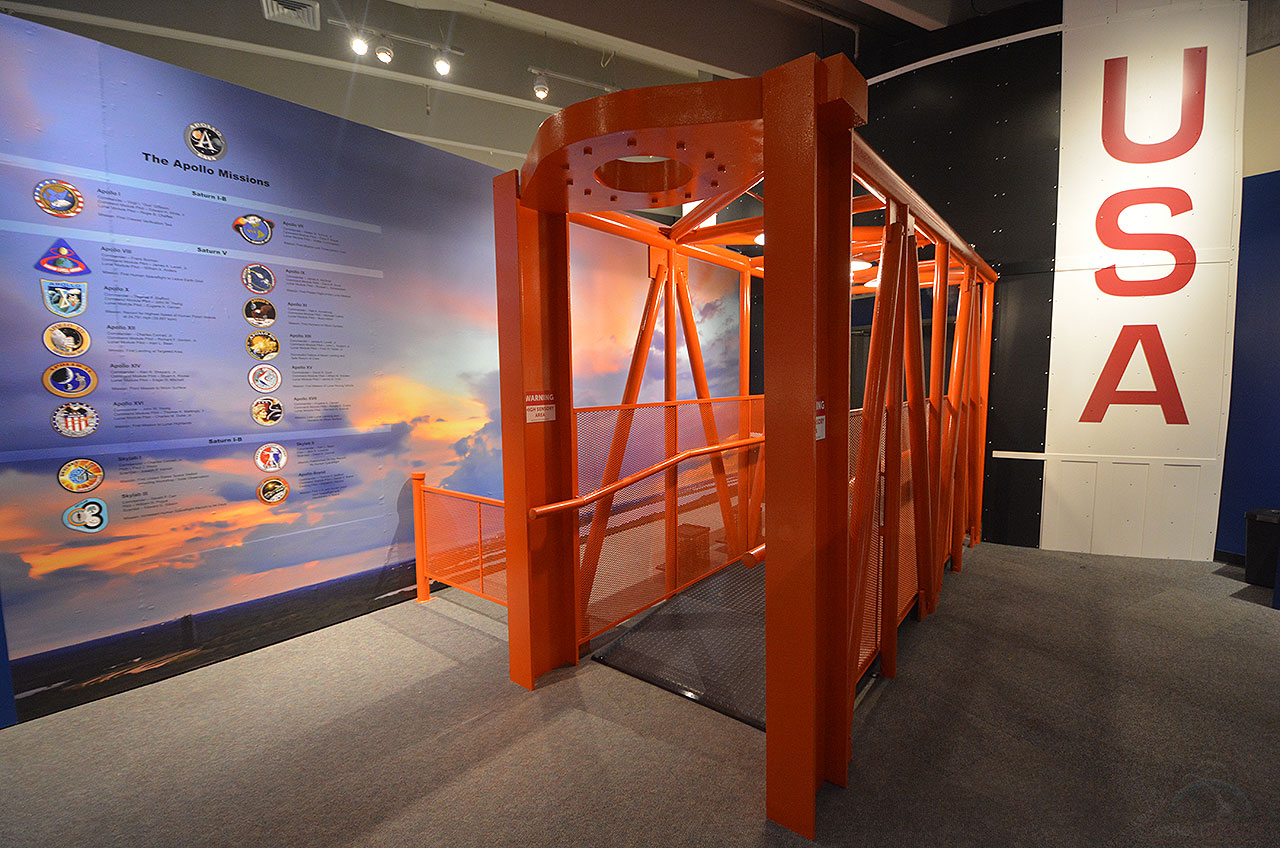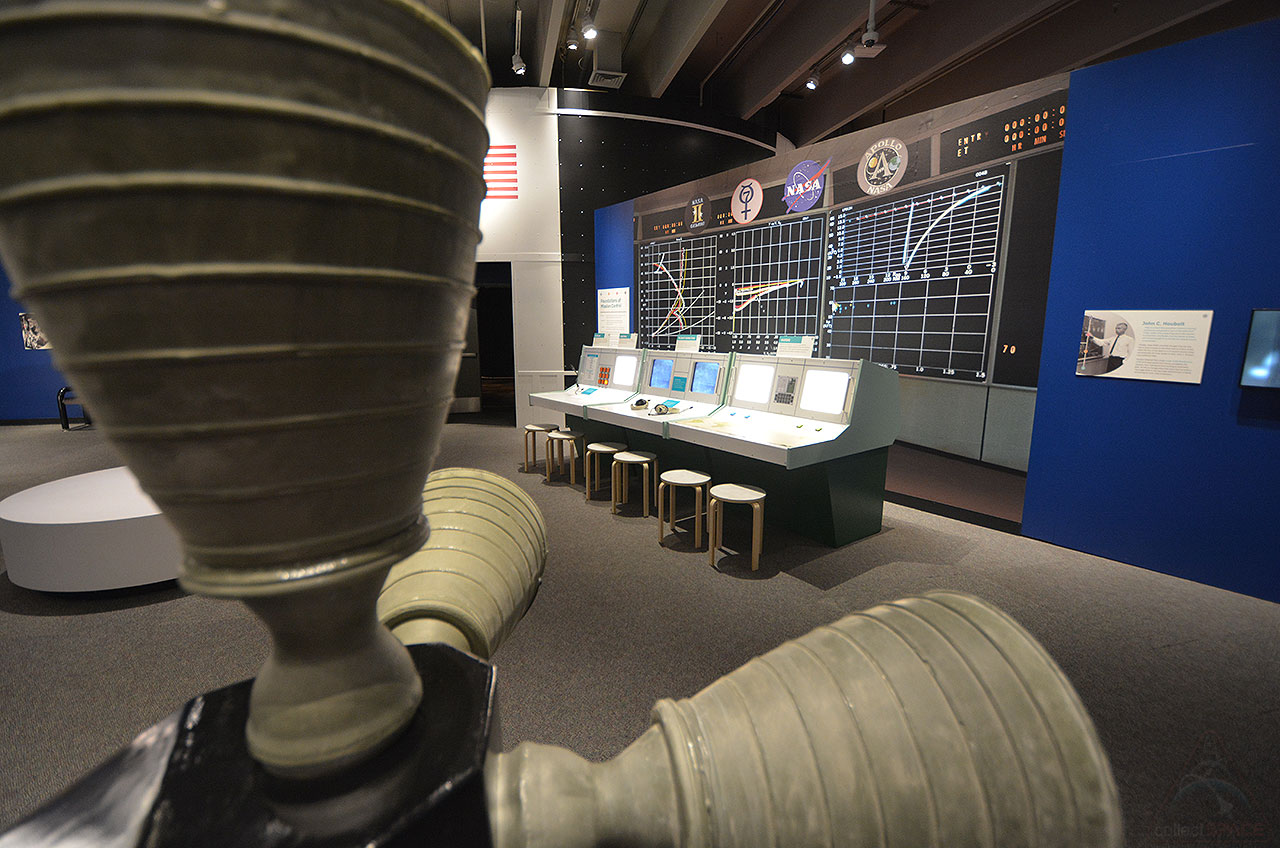Gateway to the... Moon: Apollo 11 Capsule Lands on Display in St. Louis

ST LOUIS, Missouri — St. Louis, Missouri is often called the "Gateway to the West," in no small part because of its landmark Gateway Arch. Well, now the city could also be referred to as "Gateway to the Moon" with the arrival of a Smithsonian exhibit.
"The capsule, the command module Columbia, that returned Apollo 11 astronauts safely to Earth, just landed, or splashed down, at the Saint Louis Science Center!" proclaimed Christian Greer, the chief officer for science, education and experience at the Science Center.
The historic spacecraft is the centerpiece of the Smithsonian's traveling exhibition "Destination Moon: The Apollo 11 Mission," dedicated to showcasing artifacts from the first moon landing mission. The exhibition debuted in Houston, Texas in 2017. St. Louis marks the second stop along a three-year, four-city tour, which will later visit museums in Pittsburgh, Pennsylvania and Seattle, Washington. [Best Summer Vacation Ideas for Space Lovers]
"When we found out the Science Center was one of just four institutions to have the opportunity to host this exhibition, we began to think about what we could do to create the most memorable experience for our guests, for our city and our region," said Bert Vescolani, the president and CEO of the Saint Louis Science Center, at a press preview for the exhibit.
"Destination Moon" opened to the public on Saturday (April 14) and will remain on display through the 49th anniversary of the Apollo 11 mission in mid-July, closing on Sept. 3. Admission to the exhibit is $10 for adults or $8 for seniors and children.
Making the moon local
The "Destination Moon: The Apollo 11 Mission" exhibit, as first deployed at Space Center Houston, includes the Apollo 11 command module and 20 related artifacts, including astronaut Buzz Aldrin's spacesuit gloves and helmet visor assembly, a moon rock collection box and an injector plate from a Saturn V rocket's F-1 engine used to launch Apollo 11 and raised off the ocean floor decades later.
"The exhibition tells the story of the Apollo 11 mission with the spacecraft, but also with key artifacts," said Michael Neufeld, the lead curator for "Destination Moon" at the Smithsonian's National Air and Space Museum.
Breaking space news, the latest updates on rocket launches, skywatching events and more!
The Saint Louis Science Center displays "Destination Moon" in its entirety, but has also built upon it to place it into the context of its surrounding area.
"We've added more than 8,000 square feet [745 square meters] of experiences to this exhibit," said Vescolani. "Activities and visuals, including more than a hundred artifacts from the Science Center's collection, that you won't see at any other spot, just here at the Saint Louis Science Center."
St. Louis was home to McDonnell Aircraft (now part of Boeing), which was NASA's lead contractor for the Mercury and Gemini spacecraft, the precursor programs to Apollo. The midwest city also hosted the U.S. Air Force's Aeronautical Chart and Information Center, which created many of the maps of the moon used in planning the Apollo missions.
Before guests encounter the Smithsonian-loaned part of "Destination Moon," they enter a replica of 1960s St. Louis home, stepping into a living room for an Apollo 11 launch and moon landing party, complete with era-appropriate food, music and footage playing on a period television set.
Visitors then come across the lunar charts created in St. Louis and are introduced to the personal stories of engineers and scientists who were part of the 400,000 people nationwide who made the Apollo 11 moon landing possible.
Hands-on Apollo history
After seeing Columbia and touring through the Smithsonian artifacts — which are strictly hands-off, guests of all ages, but especially children, are invited to climb on board mockups of an Apollo command module and lunar module.
Created by the Science Center for "Destination Moon," both full-size vehicles are linked by audio to an adjacent row of Mission Control consoles, where guests can also take a turn directing simulated flights to the moon.
"I believe that it was a NASA administrator during the Mercury, Gemini and Apollo missions who was quoted as saying that President Kennedy plucked a decade out of the 21st Century and placed it in the 1960s," said Greer. "Well the Smithsonian and the Saint Louis Science Center teams have plucked a decade out of the '60s and brought it to you here in St. Louis today."
"More than just looking back," said Neufeld, "we hope that 'Destination Moon' will inspire the next generation of mathematicians, scientists, inventors, explorers and astronauts."
See more photographs from "Destination Moon: The Apollo 11 Mission" as exhibited at the Saint Louis Science Center at collectSPACE.
Follow collectSPACE.com on Facebook and on Twitter at @collectSPACE. Copyright 2018 collectSPACE.com. All rights reserved.

Robert Pearlman is a space historian, journalist and the founder and editor of collectSPACE.com, a daily news publication and community devoted to space history with a particular focus on how and where space exploration intersects with pop culture. Pearlman is also a contributing writer for Space.com and co-author of "Space Stations: The Art, Science, and Reality of Working in Space” published by Smithsonian Books in 2018.
In 2009, he was inducted into the U.S. Space Camp Hall of Fame in Huntsville, Alabama. In 2021, he was honored by the American Astronautical Society with the Ordway Award for Sustained Excellence in Spaceflight History. In 2023, the National Space Club Florida Committee recognized Pearlman with the Kolcum News and Communications Award for excellence in telling the space story along the Space Coast and throughout the world.



